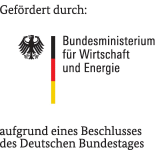The aim of the R&D project is to develop technologies that enables electrically powered watercraft to operate autonomous on inland waterways. The requirements concern both real-time trajectory planning in the highly confined space of rivers, canals and locks, and the most precise possible traversal of this trajectory under influences such as flow, shoals, wind and oncoming traffic, which are particularly challenging on inland waterways.

| Title: | A SWARM Autonomous electric shipping on waterways in metropolitan region |
| Term: | 09/2019 – 08/2022 |
| Project Manager: | Dr. C. Masilge |
| Founding: | Federal Ministry for Economic Affairs and Energy |
| Project administration: | Project Management Jülich |
| Partners: | BEHALA, Infineon, Veinland, TU Berlin, Uni Rostock |
| Reg.-No.: | 03SX485A |
Both the technological requirements for the watercraft itself are considered, but also whether and which technological requirements for the infrastructure in terms of communication and positioning are needed. The processes of going alongside a pier as well as loading and unloading are of secondary importance in this first step; the project will first address the question of autonomous movement on the water. In particular, the question of whether it is possible to equip the vehicle itself with sufficient sensor technology so that it can navigate safely without further land-based aids, apart from satellite positioning, or whether it is necessary to install additional infrastructure on the waterway for safe autonomous operation is to be addressed. The vessels will be equipped with state-of-the-art sensors that enables a sufficiently accurate description of the environment. It has to be investigated whether it is mandatory to use an external traffic control or is it possible to enable the vessels to make its own decisions by an AI system on board. Another aspect is the optimization of the technology with regard to the target parameters of the most precise positioning possible and the least possible use of energy, in order to jeopardize neither traffic safety nor marketability in the long term. The result of the project will be a technology that enables the autonomous and decarbonized operation of smaller watercraft on inland waterways in the vicinity of metropolitan areas. The technical feasibility will be demonstrated by two test vehicles, which will be used during the project to test the combination of the technologies used. The operational aspects will be illustrated in the form of utilisation concepts and demonstrated on the basis of a specific use case to be selected in the course of the project. In order to enable the shift of freight transports from road to waterways in metropolitan regions in the future, an autonomous electrically driven water vehicle will be developed, which is able to reach the metropolis energetically favourable coupled with similar containers and which splits up in the sense of the (pre-)last mile and reaches the destination autonomously.
The demonstrators will initially be developed and tested under laboratory conditions in the towing tank for testing the developed technologies individually, as well as in interaction and as a whole. Ultimately, the functionality of the autonomous electric watercraft system is to be demonstrated by means of an outdoor test in a real laboratory on inner-Berlin waterways.